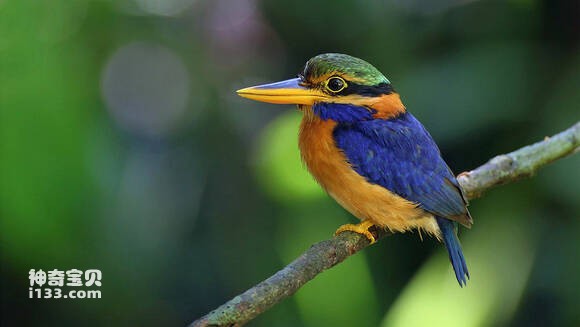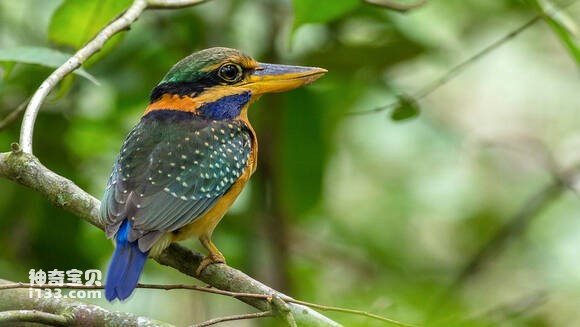Actenoides concretus
IUCN
LCBasic Information
Scientific classification
- name:Actenoides concretus
- Scientific Name:Actenoides concretus,Chestnut-collared Kingfisher
- Outline:Climbing birds
- Family:
Vital signs
- length:About 24 cm
- Weight:70-90g
- lifetime:No textual research information is available
Feature
Distribution and Habitat
It is distributed in Indochina Peninsula and southeast coastal areas of China (including Myanmar, Vietnam, Laos, Cambodia, Thailand, southeast coastal areas of China, Hong Kong region of China, and Hainan Island). The Pacific Islands (including China's Taiwan Province, Dongsha Islands, Xisha Islands, Zhongsha Islands, Nansha Islands and the Philippines, Brunei, Malaysia, Singapore, Indonesia's Sumatra, Java Island and Papua New Guinea).
The chestnut collar emerald lives on the Asian continent and moves from sea level to a height of 800 meters. However, they have also been found in Borneo at altitudes of up to 1700 m, where they usually reside in dense forests and near water.
Appearance
Chestnut collar jade is 24 cm long and weighs 70-90g. The male has a dark green cap. The forehead is black, the pillow is green, and there is a large dark blue spot on the sides from the gills to the neck. Eyes and eyebrows reddish-brown. The cheeks, chin and throat have a pale yellow-orange color. The thin whiskers are bluish-purple and extend back and forth. The neck and chest are red, the upper back is a pretty black coat, and the wings are blue-purple. Waist and hips are beautiful bright blue. The tail is blue and purple. The wings, trailing edge and flange are red. The mouth is yellow. The irises are dark brown, the legs yellow-green.
The female bird differs from the male bird by having slightly larger eye lines. Deep olive green color on upper back, shoulder blades, wings. Scaly markings on wings and dorsal feathers. Young birds are similar to adult birds. It has a strong beak and is mottled grayish-brown in color. The mouth is thick and long like a chisel, the base is wider,
Details
Actenoides concretus, Chestnut-collared Kingfisher, has 3 subspecies.

Chestnut collar jade in the hunt, generally alone or couples to hunt together. Like most forest kingfishers, they are completely carnivorous. Often searching for prey in leaves or dirt. The main diet is invertebrates such as crickets, spiders, scorpions, and snails. They also eat small vertebrates, such as small fish, snakes and lizards.

Chestnut collar emerald nest on the earth cliff or river dyke, tunnell-type cave dug with the mouth for the nest, 10 cm deep, 20 cm wide, 60 cm diameter long oval. These caves are generally bare of bedding. The eggs are laid directly on the nest ground. Some also drill holes in tree trunks for nests. Two eggs are laid at a time, and the breeding time is April, May and June in Malaysia, December to March in Borneo, and March in Sumatra. The chicks nest for about 22 days.
Listed in the International Union for Conservation of Nature (IUCN) ver 3.1:2008 Red List of Birds.
Protect wild animals and eliminate wild meat.
Maintaining ecological balance is everyone's responsibility!








